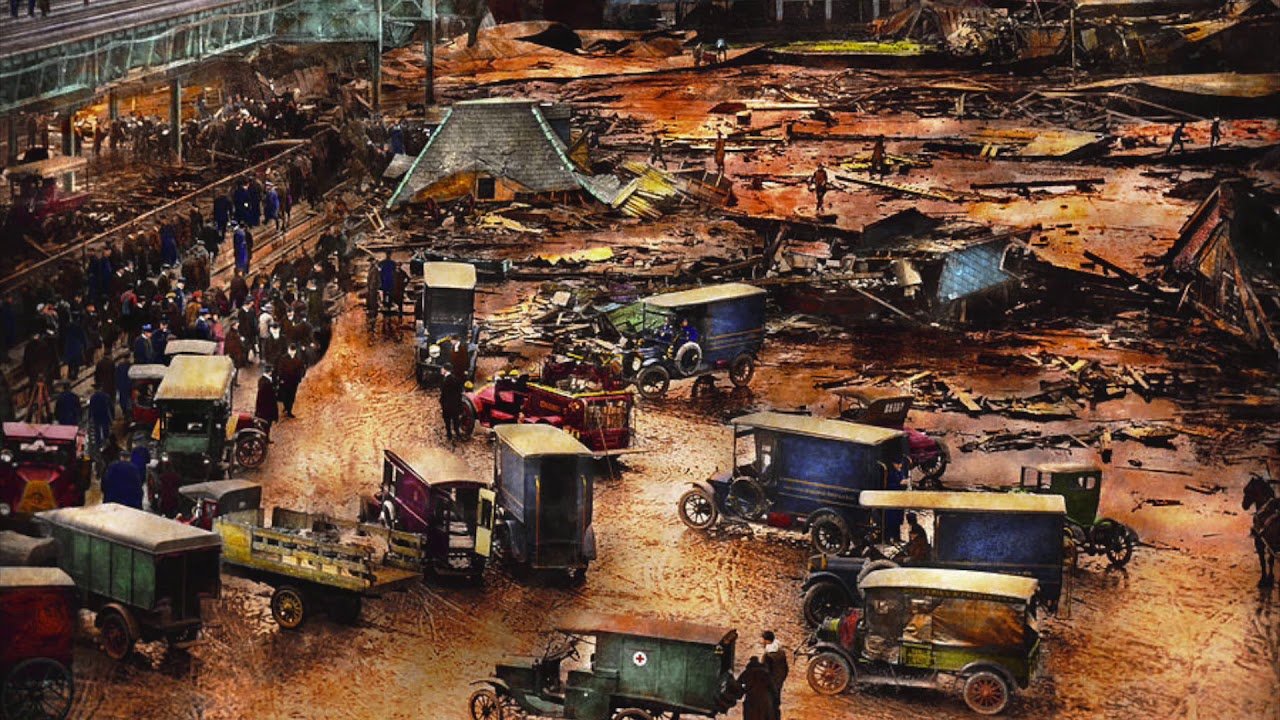It may sound silly, but when two million gallons of sticky molasses, or enough to fill three Olympic-sized swimming pools, collapsed into Boston at 35 miles-per-hour speed, it was no joke. Metal rivets flew through the air, the vacuum effect pulling a train off its tracks. Buildings collapsed from the force of the explosion. And then the flood began; a 40-foot tall wave of molasses flowed down Commercial Street, not only covering the street but drowning and destroying everything in its path.
Molasses is a sticky substance that is made by boiling sugarcane and extracting the sugar. It’s a key cooking ingredient and sweetener for gingerbreads and baked beans. Sugar grown in the English colonies in Jamaica and Barbados was processed into molasses, which was carried to Boston to be fermented and turned into rum. Then it was shipped to Africa to trade for slaves. The ships came back to Jamaica, sold the slaves to work there for more molasses, and the cycle began again. Since Boston was still producing lots of rum, even when the slave trade ended, they needed enough molasses. In 1919, the largest tank in Boston collapsed.
The tank’s owner had been notified about the leaking, but they had chosen to ignore it and “fix the problem” . . . by painting the tank brown to cover up the dripping. The victim’s families pinned it on bad architecture, while the lawyers blamed it on “evilly disposed persons,” as molasses can also be used as munitions. The thin steel tank, plus the still-warm shipment that had just come in from the islands started cooling down, which created a more fatal effect. Twenty-one people and 12 horses died and 150 more were estimated to be wounded. Many rescuers tried to save victims but had gotten stuck in the molasses themselves.
In conclusion, this incident was a major fail which resulted in an estimated $100 million dollars in damage in today’s money, multiple lawsuits, and a lot of damaged property. The lesson? It’s pretty stupid to build a poorly designed steel tank of a possibly deadly substance in a city, especially if the company won’t even fix it when it’s broken.
And on especially hot days in summer, it’s said you can still smell the slight odor of molasses drifting through Boston.
https://www.boston-discovery-guide.com/great-molasses-flood.html
https://www.smithsonianmag.com/smart-news/why-boston-molasses-disaster-was-so-deadly-180961209/

